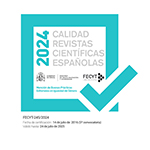Origins and evolution of picture book in Western world. A review between seventeenth and twentieth centuries
Abstract
In recent years picturebooks have become one of the main editorial products of children's literature and their presence in libraries, school spaces and bookstores is increasing. This genre is characterized by the interaction of a series of languages that intertwine to create meaning: text, images, format and paratexts combine their messages and contribute to the creation of the work. This publication takes a historical journey through the background of picturebooks and their subsequent evolution thanks to the development of various printing techniques and experimentation in the field of design and illustration. Four fundamental aspects are identified in the development of picturebooks: large formats where the materiality of the product is also taken into account, the decisive role of illustrations, the establishment of the double-page as a unit of meaning and the complex interrelation between text and image. It is of great importance that teachers and mediators know the origins of this genre, as well as its development over time, so that they can foster a critical approach to the interpretation of formal and design language.
Downloads
Article download
License
In order to support the global exchange of knowledge, the journal Didáctica. Lengua y Literatura is allowing unrestricted access to its content as from its publication in this electronic edition, and as such it is an open-access journal. The originals published in this journal are the property of the Complutense University of Madrid and any reproduction thereof in full or in part must cite the source. All content is distributed under a Creative Commons Attribution 4.0 use and distribution licence (CC BY 4.0). This circumstance must be expressly stated in these terms where necessary. You can view the summary and the complete legal text of the licence.










